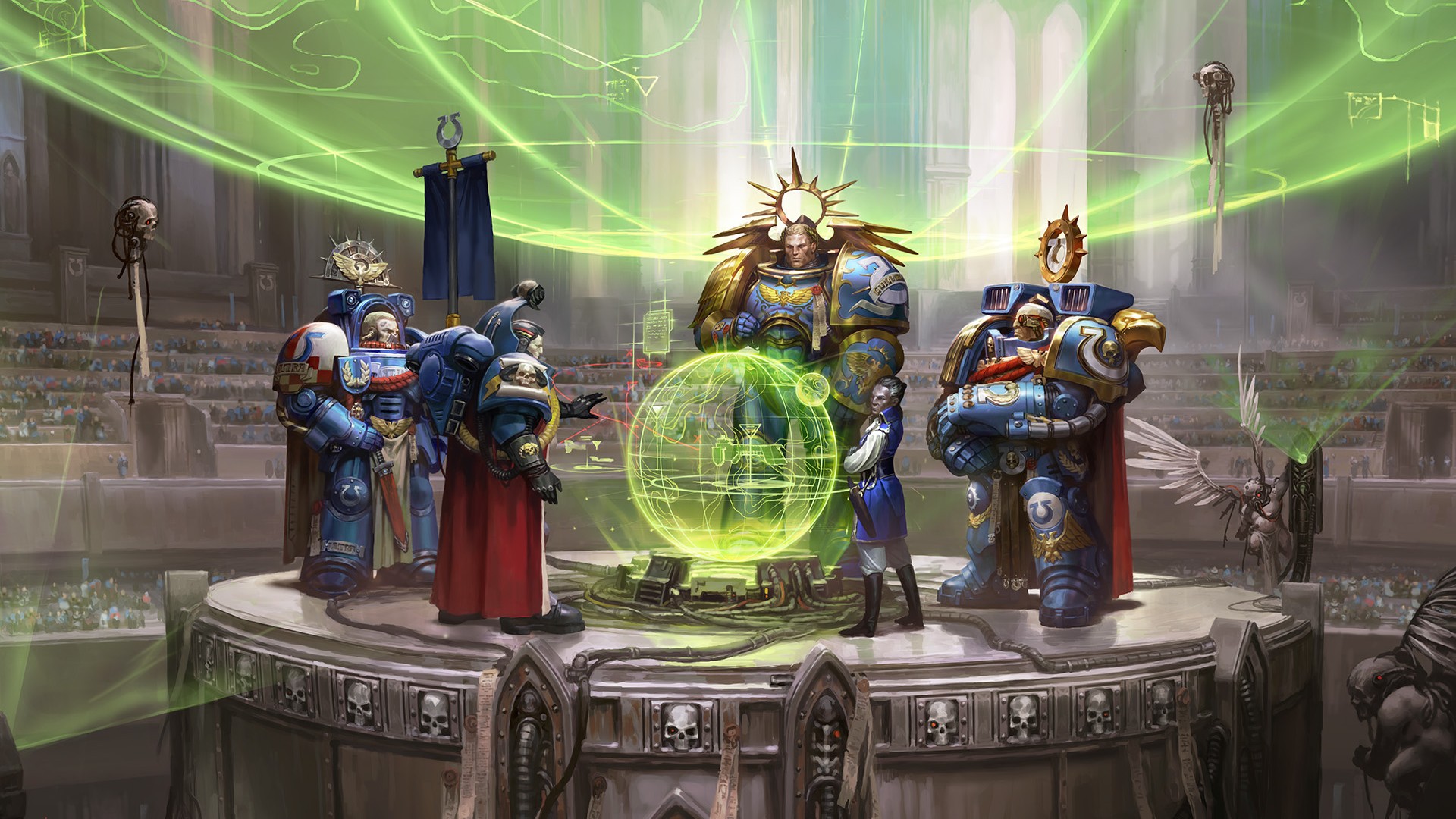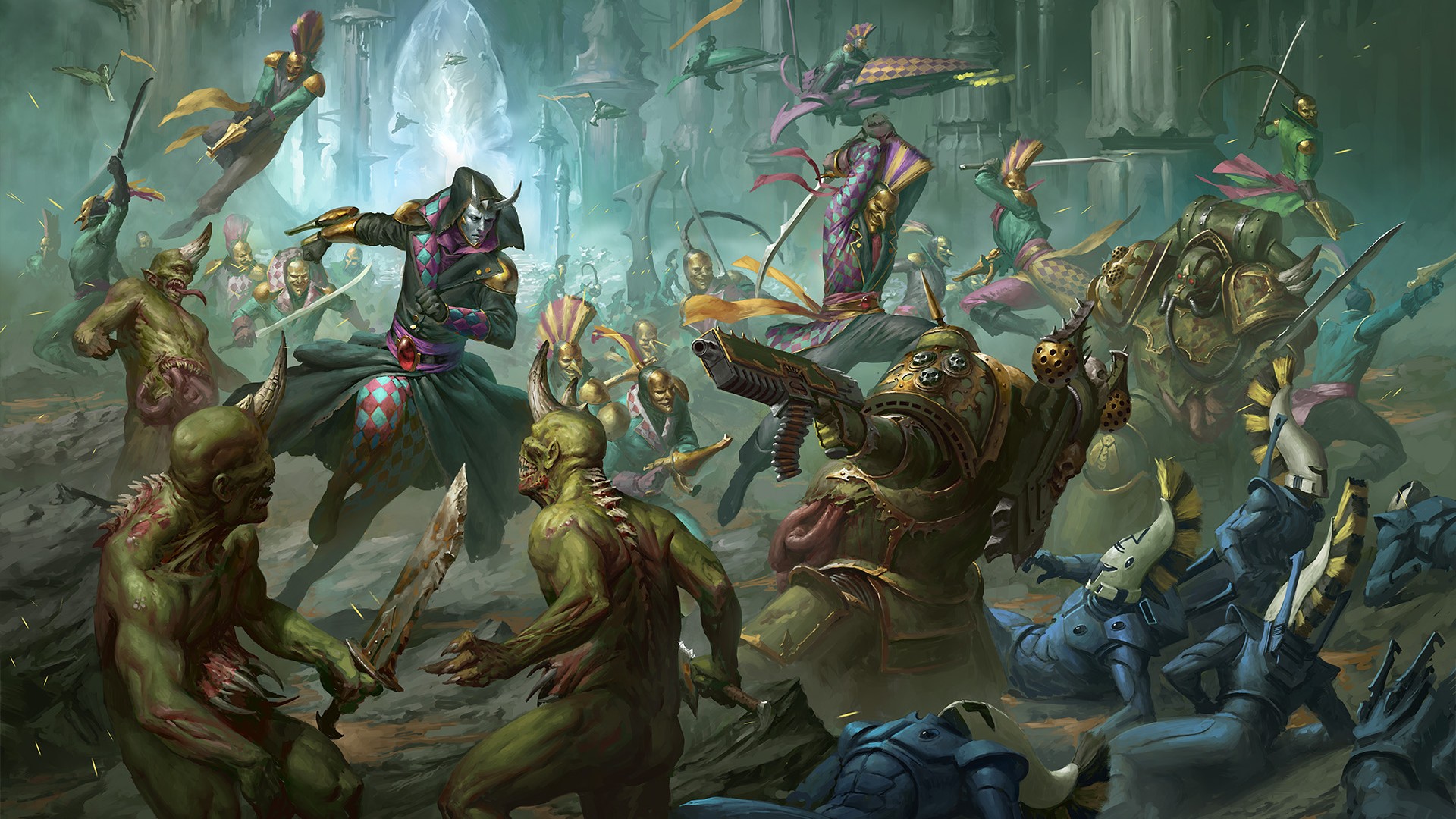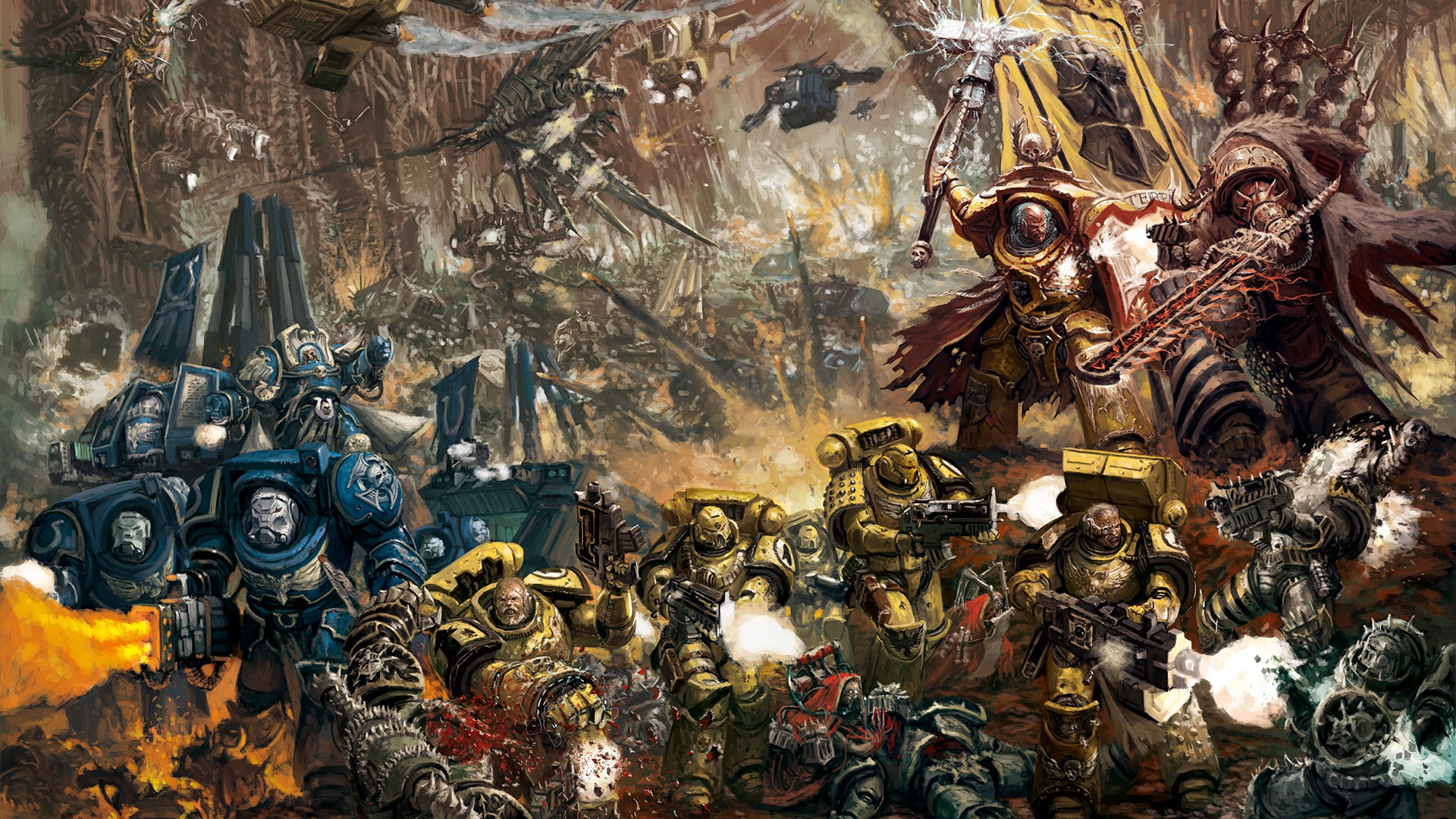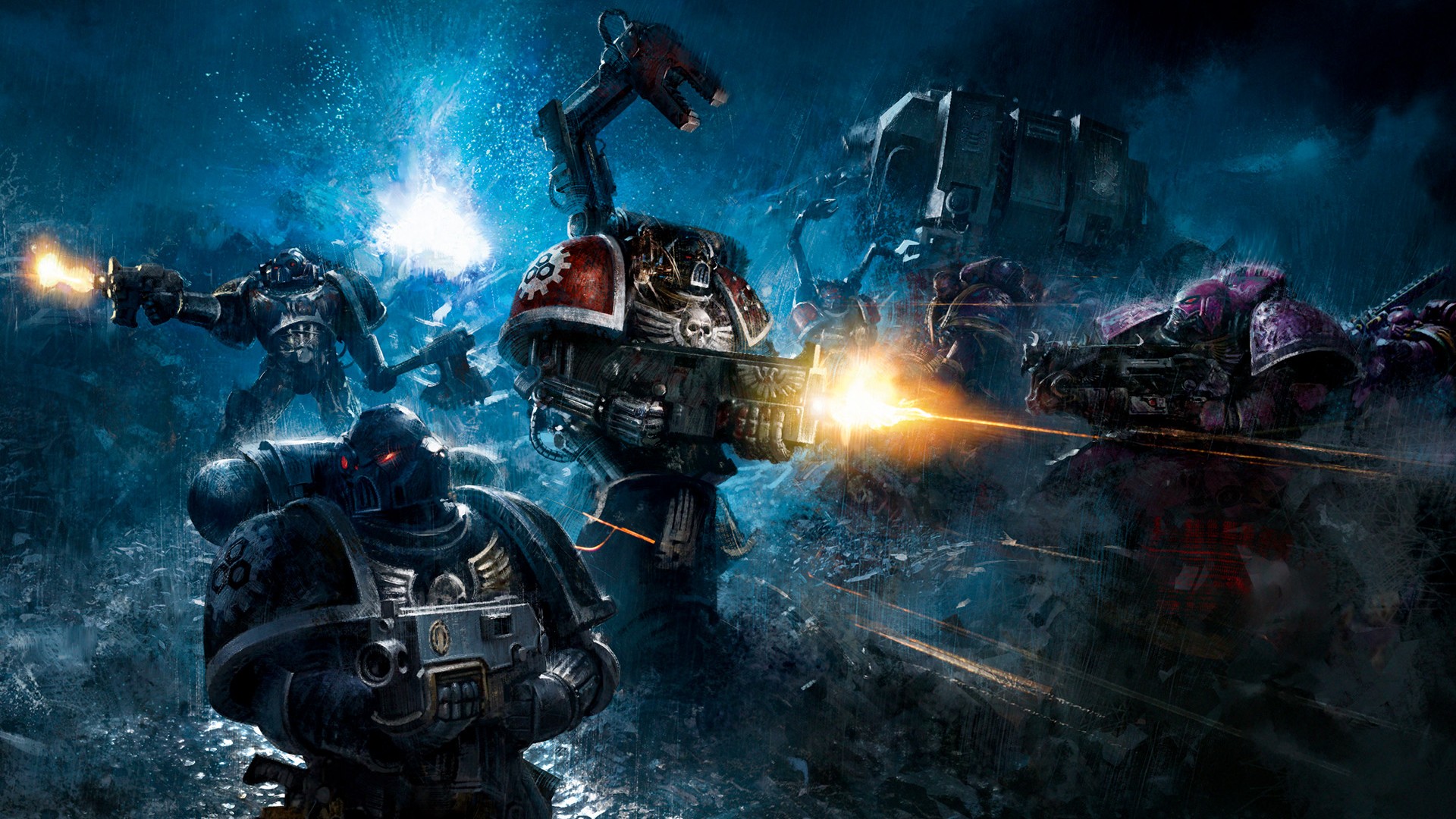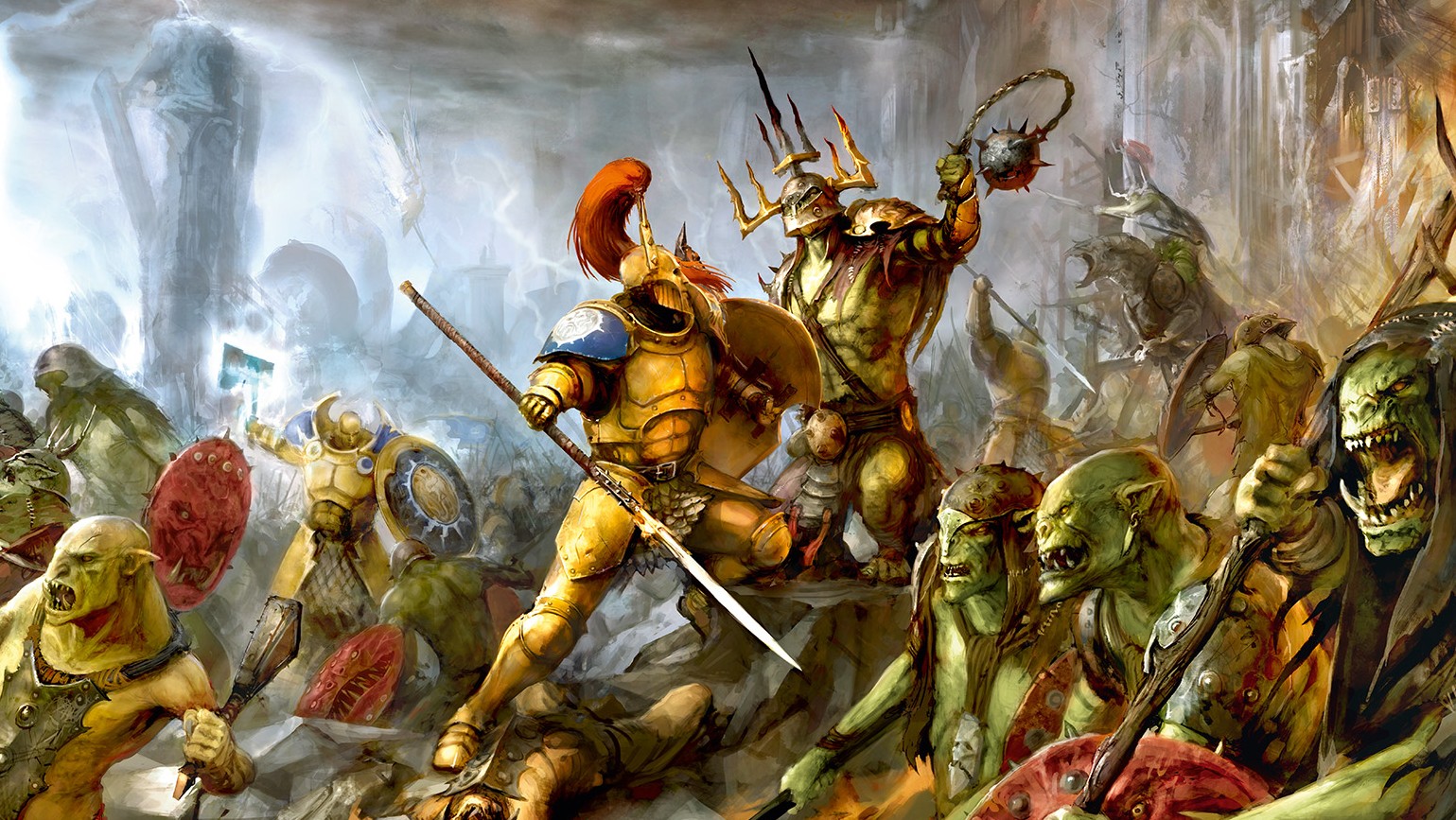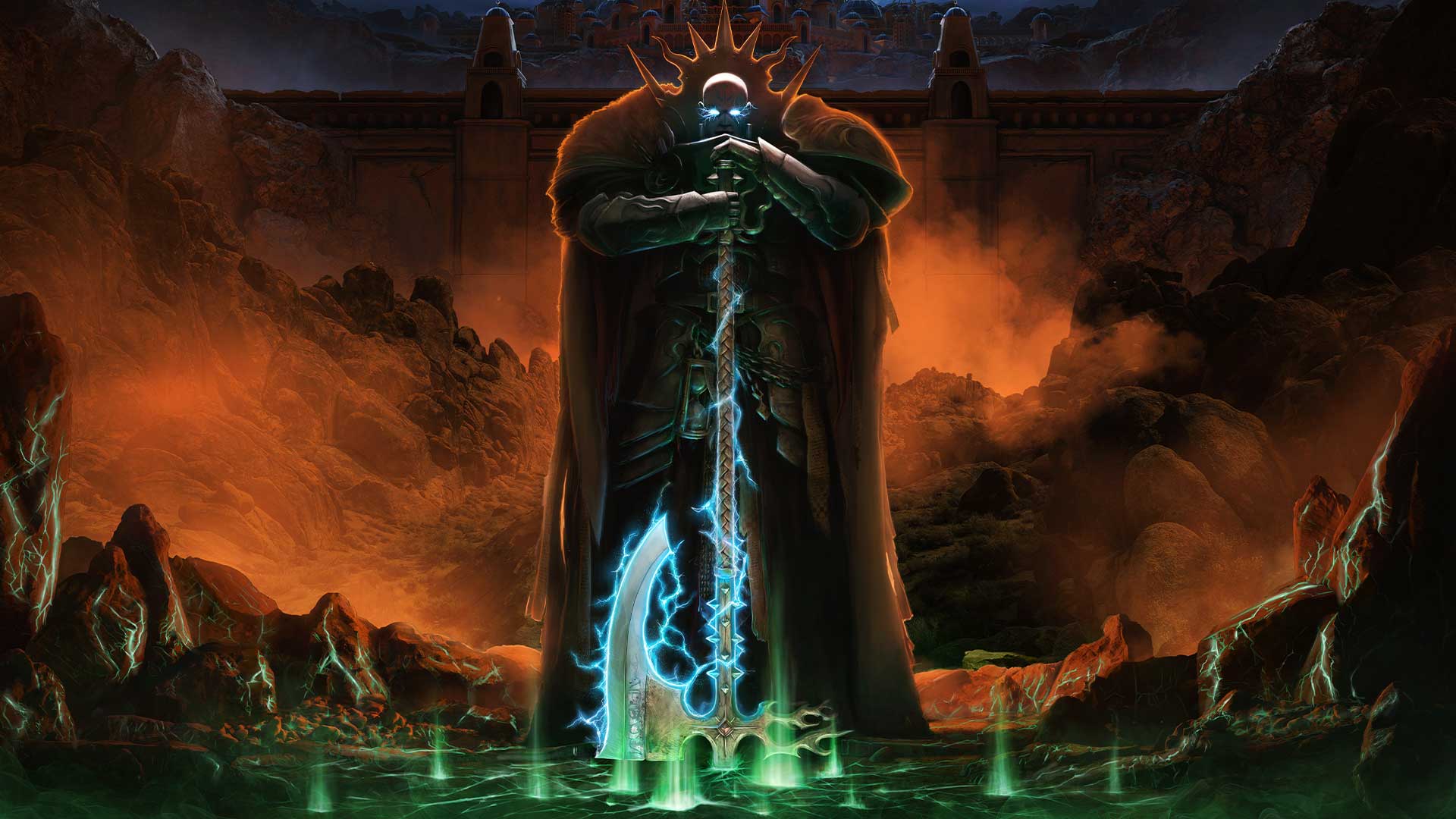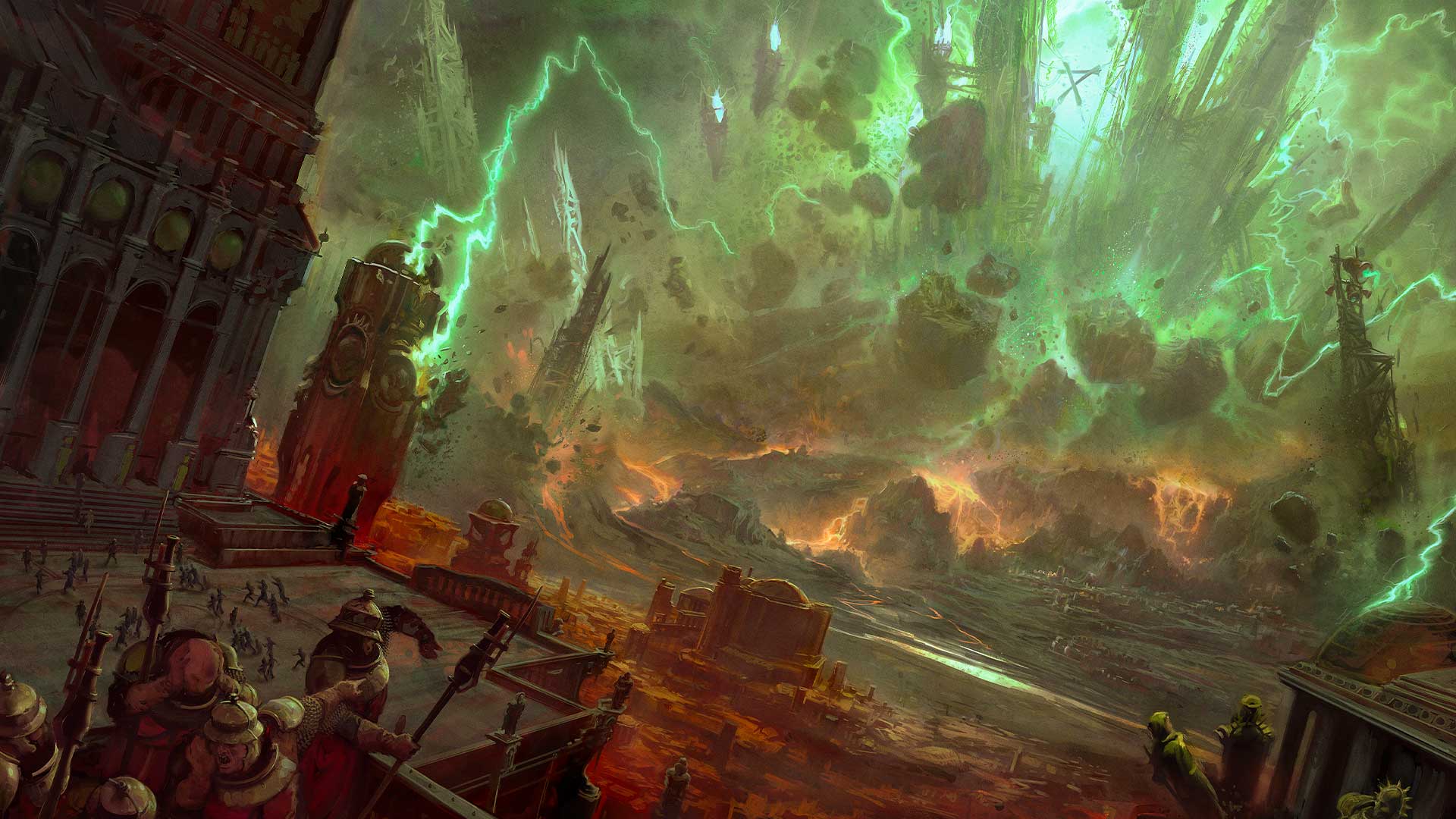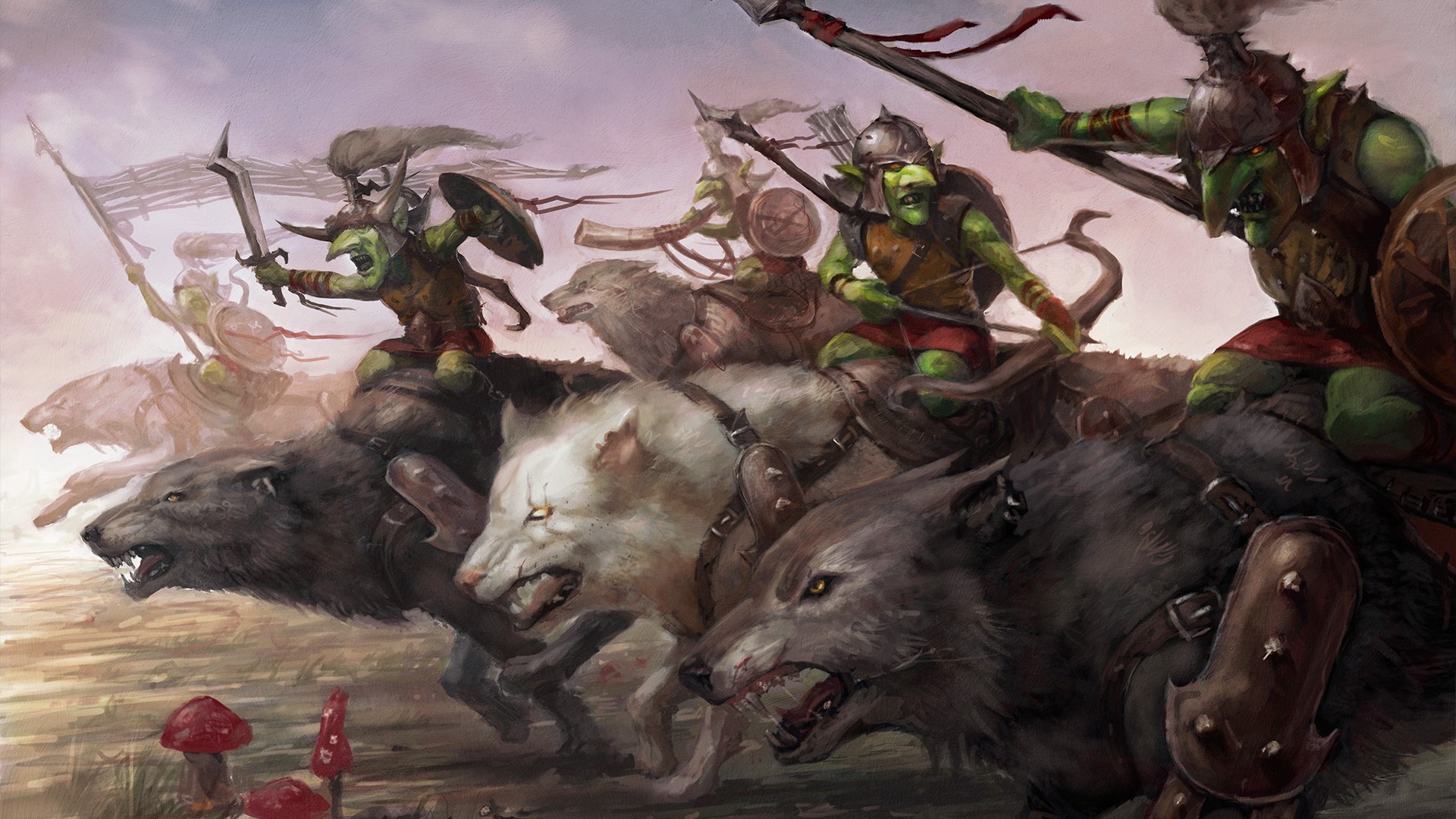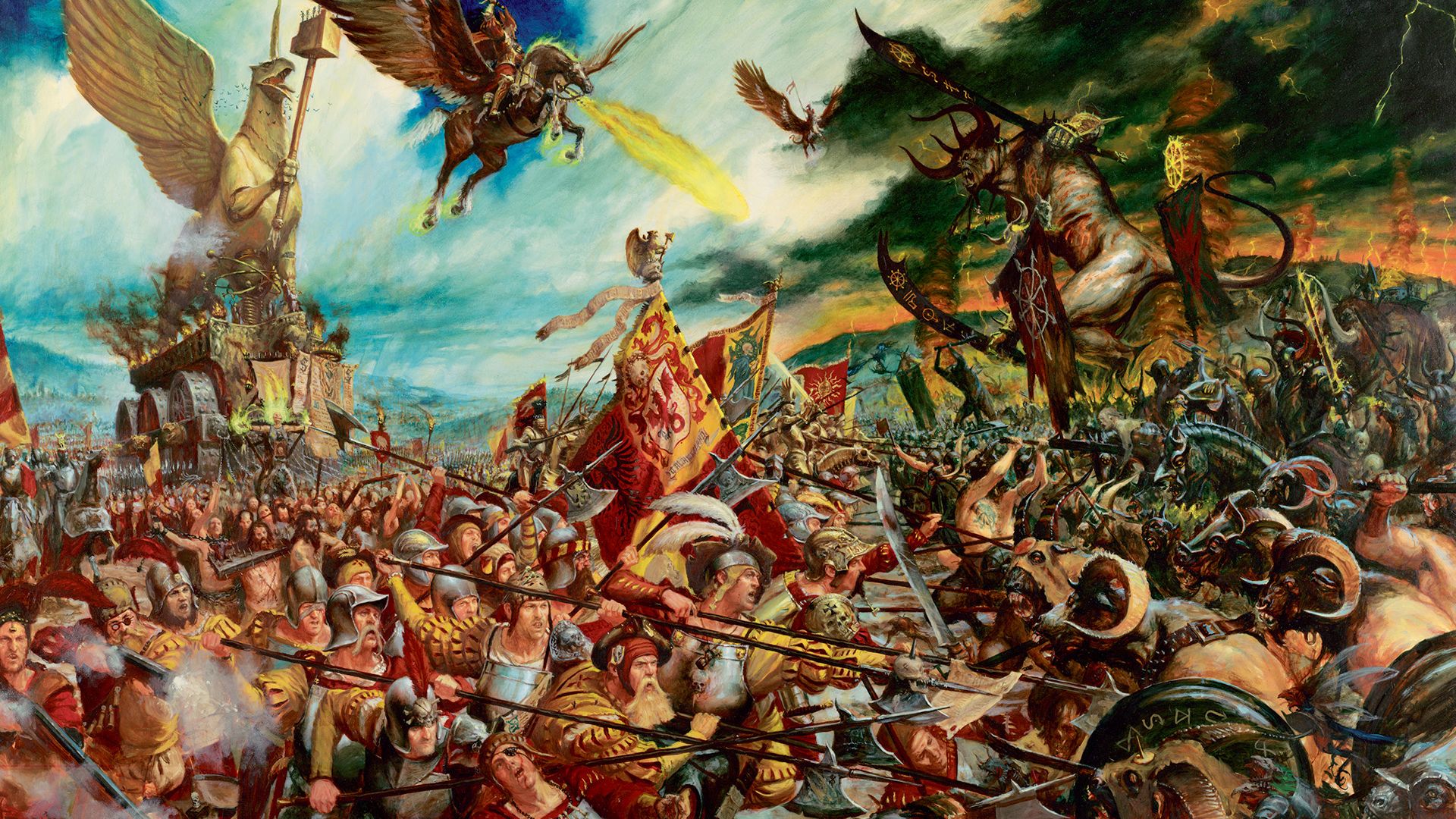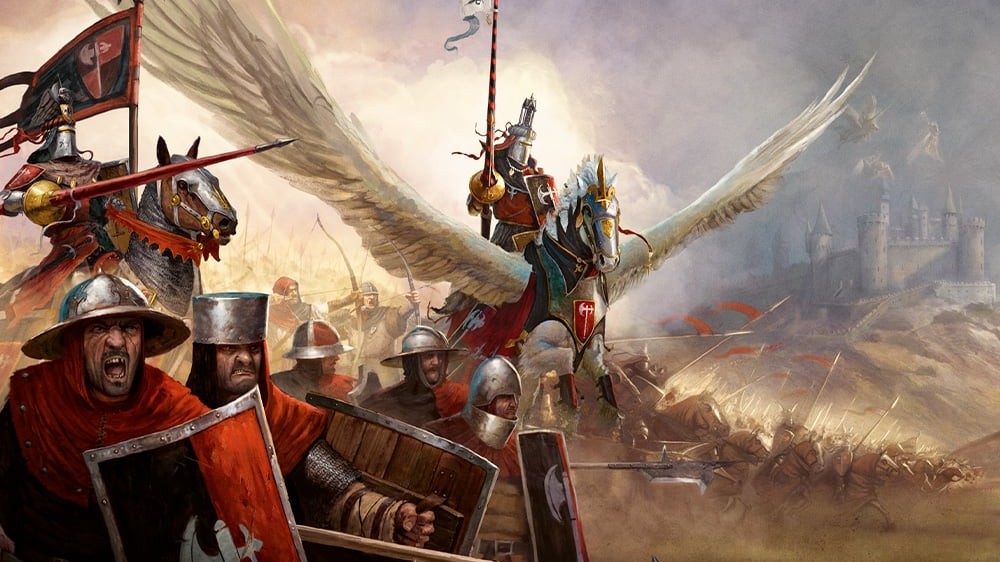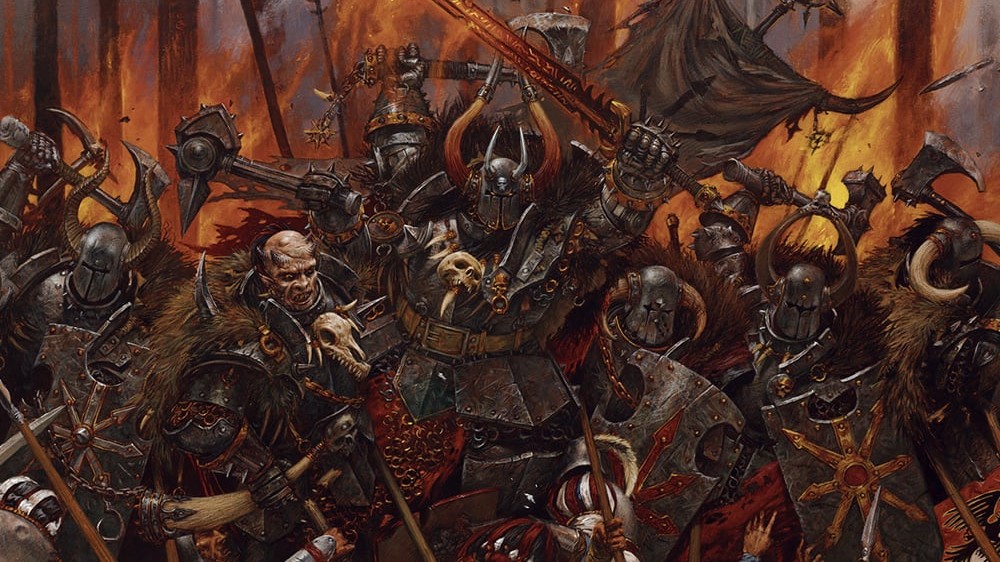Confused about what's what in Warhammer? Let me introduce you to the Warhammer 40,000, Age of Sigmar, and Warhammer Fantasy settings in one easy beginner's guide
So the first thing to understand is, it's grim, but also it's dark...
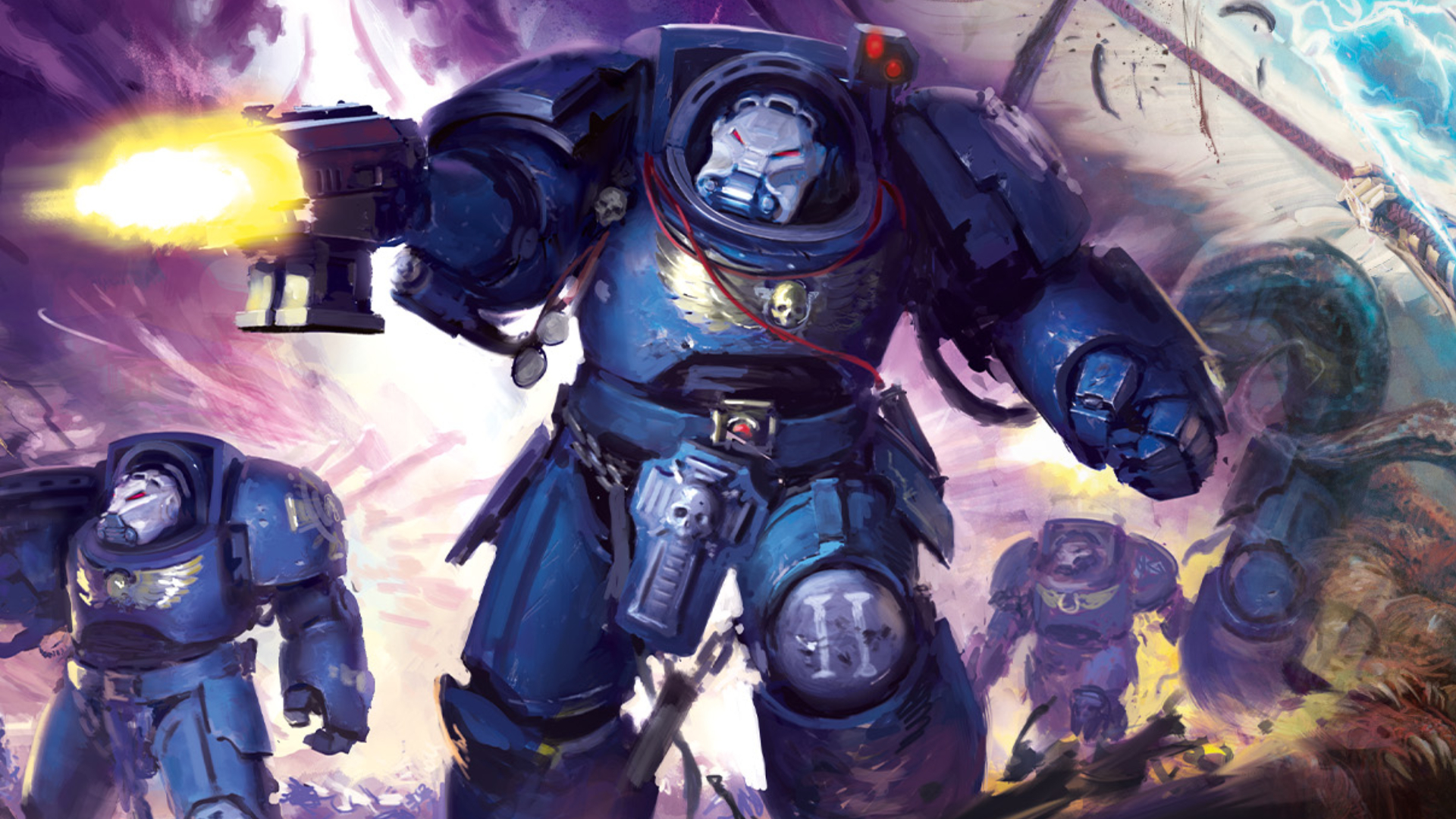
Warhammer is enjoying about as big a renaissance of popularity as it's ever had, with a tabletop wargaming boom, popular videogames, and even a TV series or two on the way. But if you're a newcomer to Games Workshop's worlds, it's still not the easiest thing to wrap your head around.
With three different core settings and decades of accumulated lore, figuring out what's what in Warhammer can be seriously confusing. If your curiosity's been piqued by Total War: Warhammer or Space Marine 2, but you're not sure where to start, never fear. I've put together just the primer for you, based on my 20 years of experience reading army books, painting miniatures, and geeking out over the latest Dan Abnett novels.
These quick and easy overviews of the three Warhammer universes will help you find your feet. From there, you'll be ready to start wiki-diving and novel-reading…
Warhammer 40,000
Notable videogames: Darktide, Mechanicus, Dawn of War, Space Marine, Chaos Gate: Daemonhunters, Boltgun
Notable tabletop games: Warhammer 40,000, Kill Team, Necromunda, The Horus Heresy
What's it about?
In the far, far future of the 41st millennium, humans live spread across the entire galaxy, as part of a grand space empire called the Imperium. Things aren't rosy, however: technology and culture are stagnant, thanks to an oppressive religion and totalitarian rule, and humanity is beset constantly by outside threats.
That includes the followers of the dark gods of Chaos, as well as aliens such as the robotic Necrons, rampaging Orks, and all-devouring Tyranids. Serving as mankind's protectors are the Space Marines—genetically-engineered, power-armoured super-soldiers.
Keep up to date with the most important stories and the best deals, as picked by the PC Gamer team.
Warhammer 40,000 combines sci-fi (taking particular inspiration from Dune) with fantasy elements like sorcery and demons. That's why many of the factions map to traditional fantasy races—such as the Eldar (elves), Votann (dwarves), and Grots (goblins).
The tone is bleak and grim, but also satirical and funny. Everything in the Warhammer 40,000 setting is dialed up to 11 with the aesthetics of a heavy metal album cover, and it's very much intended to be as absurd as it is badass.
Anything else?
You may have heard of the Horus Heresy—a sub-setting that has its own wargame and, most importantly, an enormously popular (and simply enormous) series of novels. It takes place in the year 30,000, and concerns a civil war inside the Imperium that essentially brought an end to its golden age.
The war pitted "loyalist" Space Marines against those corrupted by Chaos, and much of the narrative concerns the interactions between the Primarchs—the leaders and progenitors of the various Space Marine legions (which later become the chapters of Warhammer 40,000).
Where should I start?
Co-op shooter Warhammer 40,000: Darktide is a great introduction to the tone and feel of the setting without being too much of a lore dump. Its premise pitches gangs of (relatively) normal humans against one Chaos cult in a hive city, so you don't need to understand the scope of an entire galactic war to get into it.
If you fancy doing some reading, I recommend the novel Honourbound—similarly, it follows a lowly group of human soldiers in way over their heads, rather than dropping you right into the pomp and politics of a Space Marine chapter.
Where can I find out more?
Warhammer: Age of Sigmar
Notable videogames: Storm Ground, Realms of Ruin
Notable tabletop games: Warhammer: Age of Sigmar, Warhammer Underworlds, WarCry
What's it about?
Gods and their followers vie for supremacy across the Mortal Realms—eight connected worlds floating in the void. Sigmar, a god of lightning and war, sends out armies of his Stormcast Eternals—towering warriors reforged in his image out of human souls—to try and protect the realms from sinister undead, rampaging monsters, and particularly the forces of Chaos, barbarian hordes that worship dark gods.
Age of Sigmar was created as a new Warhammer setting following the canonical destruction of the world of Warhammer Fantasy. Though it contains dark and horrific elements, its overall tone is much more mythic and hopeful than either Warhammer 40,000 or Warhammer Fantasy, and it takes significant inspiration from Norse mythology.
Many of the factions and species common across the Warhammer settings appear in Age of Sigmar, but in reimagined forms. The Idoneth Deepkin, for example, are elves, but live beneath the sea, and raid coastal settlements to steal their souls. The Kharadron Overlords are dwarves, but have become steampunk airship pirates, sailing the skies of the Realms.
Anything else?
Age of Sigmar actually takes place in the far future of the Warhammer Fantasy setting. Following the apocalypse known as the End Times, fragments of the world and its magic coalesced in the void to create the Mortal Realms, and many of the gods and major characters—such as Nagash, Teclis, and Sigmar himself—are the same beings that appear in Warhammer Fantasy. Some factions even survived the jump pretty much as-is, such as the Seraphon, who are still recognisable as the original Lizardmen.
Where should I start?
Unfortunately we're still yet to get a great Age of Sigmar videogame, but it does have an excellent tabletop RPG. Soulbound offers a great, accessible introduction to the setting, and if you've got a group that's keen, you can delve into it even more by having your own adventures in it.
But if TTRPGs aren't your scene, there are some really fun novels you can get stuck into. Gloomspite is my personal favourite, but be warned—it gets pretty horrifying. You'll never look at goblins the same way again… For a gentler introduction more focused on the setting's poster boys, the Stormcast Eternals, I really enjoyed Soul Wars—a tale of warrior-wizards trying to stem a tide of hostile ghosts.
Where can I find out more?
Warhammer Fantasy
Notable videogames: Total War: Warhammer, Vermintide, Chaosbane
Notable tabletop games: Warhammer Fantasy (now defunct), The Old World
What's it about?
Once again we have a human empire (in this case, imaginatively named the Empire) beset by threats on all sides including worshippers of the dark gods of Chaos, but Warhammer Fantasy takes place in a more traditional, Tolkein-esque fantasy world—albeit one mashed up with various real world nations, periods of history, and pop culture.
That means raging battles between stubborn dwarves, haughty elves, rampaging orcs, the Arthurian-inspired knights of Bretonnia, vampires that look straight out of a Hammer horror movie, and more. As in Warhammer 40,000, all that's coloured by darkness and dread, but also absurdity and humour.
Warhammer Fantasy is the original, first Warhammer setting, and much of both Warhammer 40,000 and Age of Sigmar are directly based on it. It's where we first got the Skaven (everyone's favourite ratmen), the pantheon of Chaos and their daemons, the eight winds of magic, orcs that talk like football hooligans, and even the eponymous Warhammer itself, Sigmar's mighty weapon Ghal Maraz.
Anything else?
Though the Warhammer Fantasy setting was officially destroyed in the apocalyptic End Times event, it retained a place in the hearts of fans—especially thanks to the popularity of the Total War: Warhammer series. Eventually, Games Workshop decided to revive it as The Old World, a new tabletop game set a few hundred years before the period depicted in those games. That means that while it's mostly recognisable, it does have some major differences, such as the absence of certain factions. Expect this to be the new default version of Warhammer Fantasy seen in games and other licensed adaptations going forward.
Blood Bowl—Games Workshop's popular game of fantasy American football—exists in a sort of nebulous alternate version of the Warhammer Fantasy setting. It shares many of the same factions and species, but dials things much further into the realm of humour and parody.
Where should I start?
As long as you enjoy its unique brand of strategy, the Total War: Warhammer series of videogames might genuinely be the best introduction to Warhammer Fantasy ever made. Covering pretty much every faction and corner of the world, the three games are absurdly rich with lore for you to discover at your own pace when you're not busy conquering all before you.
When it comes to novels, you've got to go back to a classic—the Gotrek and Felix series, a sprawling saga of a dwarf desperate to find glorious death in battle and the man honourbound to follow him into ever more dangerous peril.
Where can I find out more?

Formerly the editor of PC Gamer magazine (and the dearly departed GamesMaster), Robin combines years of experience in games journalism with a lifelong love of PC gaming. First hypnotised by the light of the monitor as he muddled through Simon the Sorcerer on his uncle’s machine, he’s been a devotee ever since, devouring any RPG or strategy game to stumble into his path. Now he's channelling that devotion into filling this lovely website with features, news, reviews, and all of his hottest takes.
You must confirm your public display name before commenting
Please logout and then login again, you will then be prompted to enter your display name.
